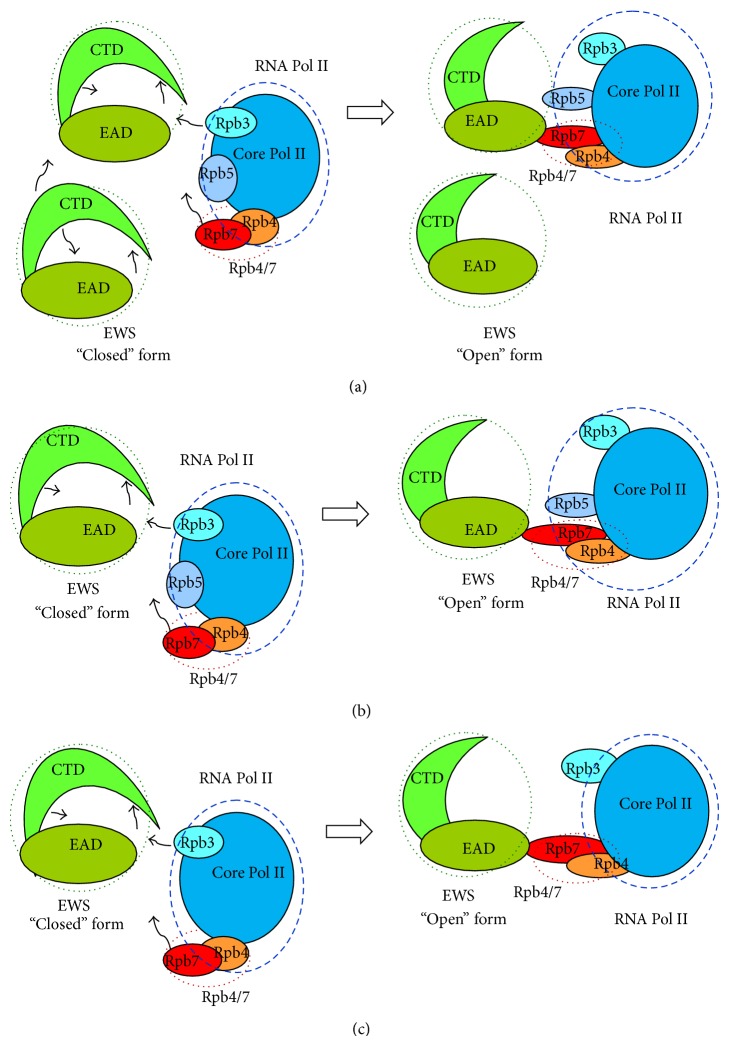Figure 2.
Proposed mechanism of the interaction between EWS and RNA Pol II (presented schematically). (a) Mechanism I. The EWS-EWS intermolecular protein-protein interactions induce the transition from “closed” to “open” conformation of the molecule, thus making the N-terminal part of EWS accessible for interaction with Rpb5 and the heterodimer Rpb4/7. (b) Mechanism II. An intramolecular interaction inside the EWS results in pushing conformation of the molecule from “closed” to “open” state, making it accessible for other molecules, such as subunits of RNA Pol II. Following this mechanism, the subunit Rpb3 from Pol II is interacting weakly with EWS that induces changes in the conformation of the molecule, leaving its N-terminal part accessible for interaction with Rpb5 and the heterodimer Rpb4/7. (c) Mechanism II. An intramolecular interaction inside the EWS results in pushing conformation of the molecule from “closed” to “open” state, making it accessible for other molecules, such as subunits of RNA Pol II. Following this proposed mechanism, the interacting partners pushing the conformation of EWS from “closed” to “open” state are only the subunit of RNA Pol II Rpb3 and the complex Rpb4/7.

